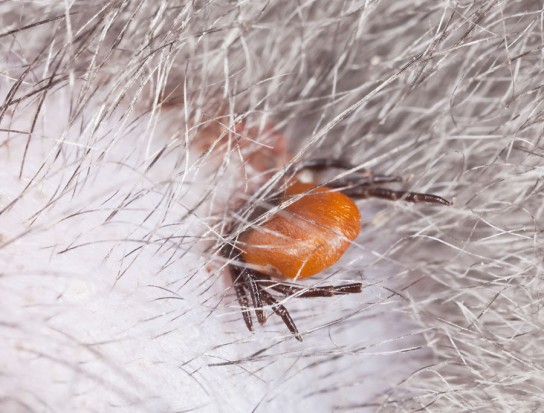A trained eye isn't usually needed to spot a heavy flea infestation. You'll probably notice your pet scratching, biting its coat, or showing other signs of discomfort. It is very easy to carry out a simple flea check by sitting your dog on a large piece of white paper and rubbing its back vigorously for a minute or so. As you rub any flea faeces will fall onto the paper. If you pick up the piece of paper and transfer the rubbings onto some damp cotton wool any flea faeces will turn a lighter shade of red. This is because they are made up of the dried blood of the host they have bitten.
Fleas breed in huge numbers. Each female can lay as many as 200 eggs which immediately fall off the animal, all around your home, making it easy to keep re-infecting your dog. This is why most people recommend using an insecticide to kill fleas on the pet and another to kill their eggs as the most effective way to eliminate fleas.
There are several treatments to choose from and you can discuss the best method with your vet. There are spot treatments, where a few drops are placed on the dogs neck, oral or injectable products, sprays and powders which can also be used around the home. It is important to treat all cats and dogs within the house at the same time.
Fleas are stubborn parasites, mainly because they reproduce at such a prolific rate. In most cases, flea infestations should clear within a few days. However, flea eggs laid around your home can survive in the carpet for up to nine months so regular treatment for your dog is recommended.
Some dogs are allergic to fleas and / or their bites. Even a few fleas can cause days of intense itching, causing hair loss and red-inflamed skin. Regular bathing and treatment for these animals is essential to help them to remain happy and healthy and free from secondary skin infections.

 How To Identify And Remove Ticks From Your Pet
How To Identify A
How To Identify And Remove Ticks From Your Pet
How To Identify A
 Reasons A Dam Might Turn On Her Litter
Reasons A Dam Mig
Reasons A Dam Might Turn On Her Litter
Reasons A Dam Mig
 Lowchen Dog Hereditary Health And Genetic Diversity
Lowchen Dog Hered
Lowchen Dog Hereditary Health And Genetic Diversity
Lowchen Dog Hered
 How Good Gut Bacteria Protects Your Dogs Overall Health
How Good Gut Bact
How Good Gut Bacteria Protects Your Dogs Overall Health
How Good Gut Bact
 Ten Ways To Puppy-proof Your Home
Ten Ways To Puppy
Ten Ways To Puppy-proof Your Home
Ten Ways To Puppy